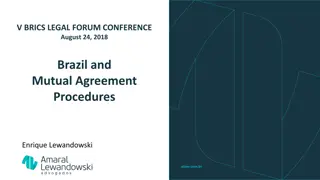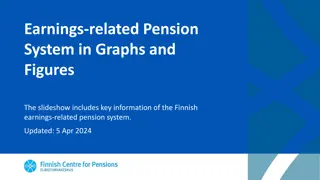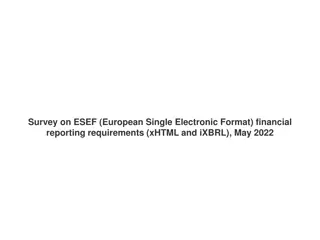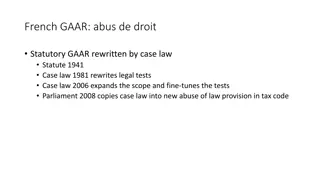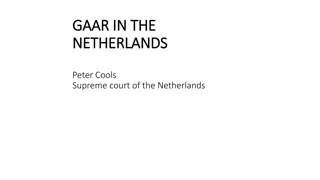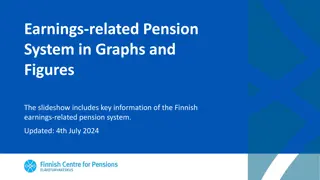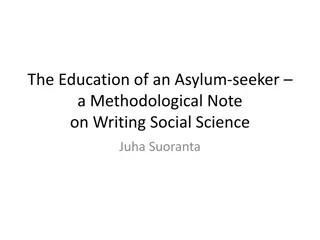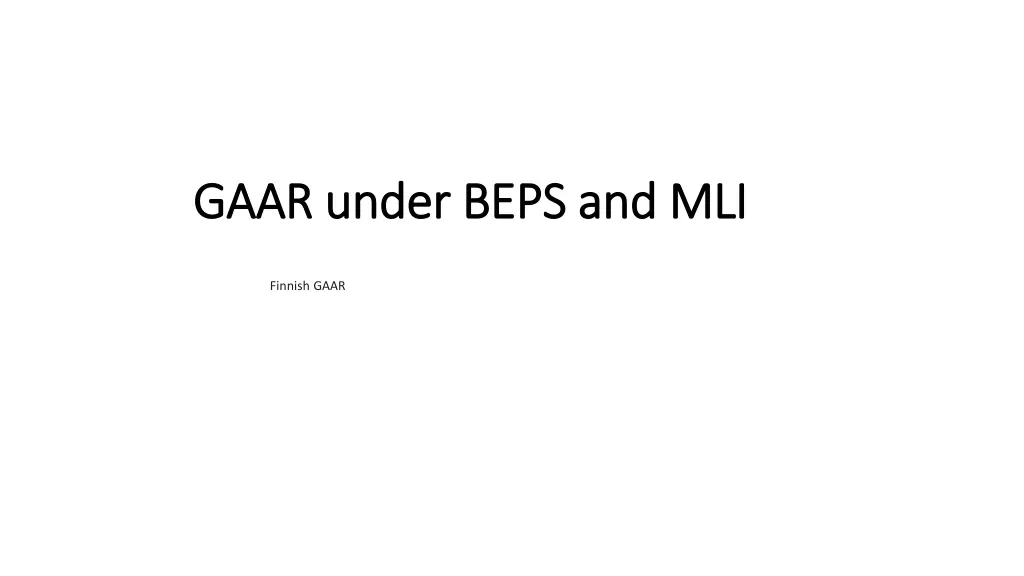
Finnish Regulations on Tax Avoidance and Income Taxation
Explore the Finnish regulations on tax avoidance and income taxation, including rules applicable to private and business income taxes. Learn about the Act on Tax Assessment, the Business Income Tax Act, and specific regulations targeting tax avoidance strategies across various tax types. Understand the application of rules, such as those related to company reorganizations, hidden dividend distribution, transfer pricing, interest payments to related parties, and more. Discover how artificial arrangements and tax benefits can be affected by these regulations.
Download Presentation

Please find below an Image/Link to download the presentation.
The content on the website is provided AS IS for your information and personal use only. It may not be sold, licensed, or shared on other websites without obtaining consent from the author. If you encounter any issues during the download, it is possible that the publisher has removed the file from their server.
You are allowed to download the files provided on this website for personal or commercial use, subject to the condition that they are used lawfully. All files are the property of their respective owners.
The content on the website is provided AS IS for your information and personal use only. It may not be sold, licensed, or shared on other websites without obtaining consent from the author.
E N D
Presentation Transcript
GAAR under BEPS and MLI GAAR under BEPS and MLI Finnish GAAR
The Finnish regulations on tax avoidance income taxation The Act on Tax Assessment includes a general rule on tax avoidance. The rule originates from the 1940 s and it is applicable to income taxes (private & business). The rule can be applied, if the taxpayer has used such a legal form which does not correspond to the true nature and purpose of the transaction OR if the purchase price or other consideration is not at arm s length and the intention has been to avoid taxes. The application of the rule has in many cases been based on overall view of the transaction(s). An unusual legal form and/or lack of other motives than tax reasons are indications of tax avoidance. The rule should not be applied if the transaction is based on genuine business reasons. There is substantial amount of published case law based on which it can be concluded in which kind of situations the rule is usually applied. 8.6.2025 2
The Finnish regulations on tax avoidance income taxation The Business Income Tax Act includes a special rule concerning company reorganizations based on the merger directive of the EU. There are also special regulations which by their nature are regulations on tax avoidance such as rule on hidden dividend distribution, rule based on which the transfer prices between related parties have to be at arm s length (in force starting from January 1, 2007), rule on the limit on the deductibility from business income of interest payments to related parties (in force starting from fiscal year 2014) & rules which prohibit trade on the shares in a loss making company. In some cases the tax benefits of artificial arrangements can even be denied by the application of the basic rule on the deductibility of expenses or other standard tax rules. 8.6.2025 3
The Finnish regulations on tax avoidance other taxes Over the years similar rules have also been enforced concerning other taxes than income taxes (transfer tax, gift and inheritance tax, taxes that the taxpayer has to pay on the own initiative of the taxpayer such as VAT, insurance taxes, social security charge, salary withholding etc.). For the part of the other taxes the rules on tax avoidance have been applied very seldom some of them have not (yet) been applied at all. 8.6.2025 4


